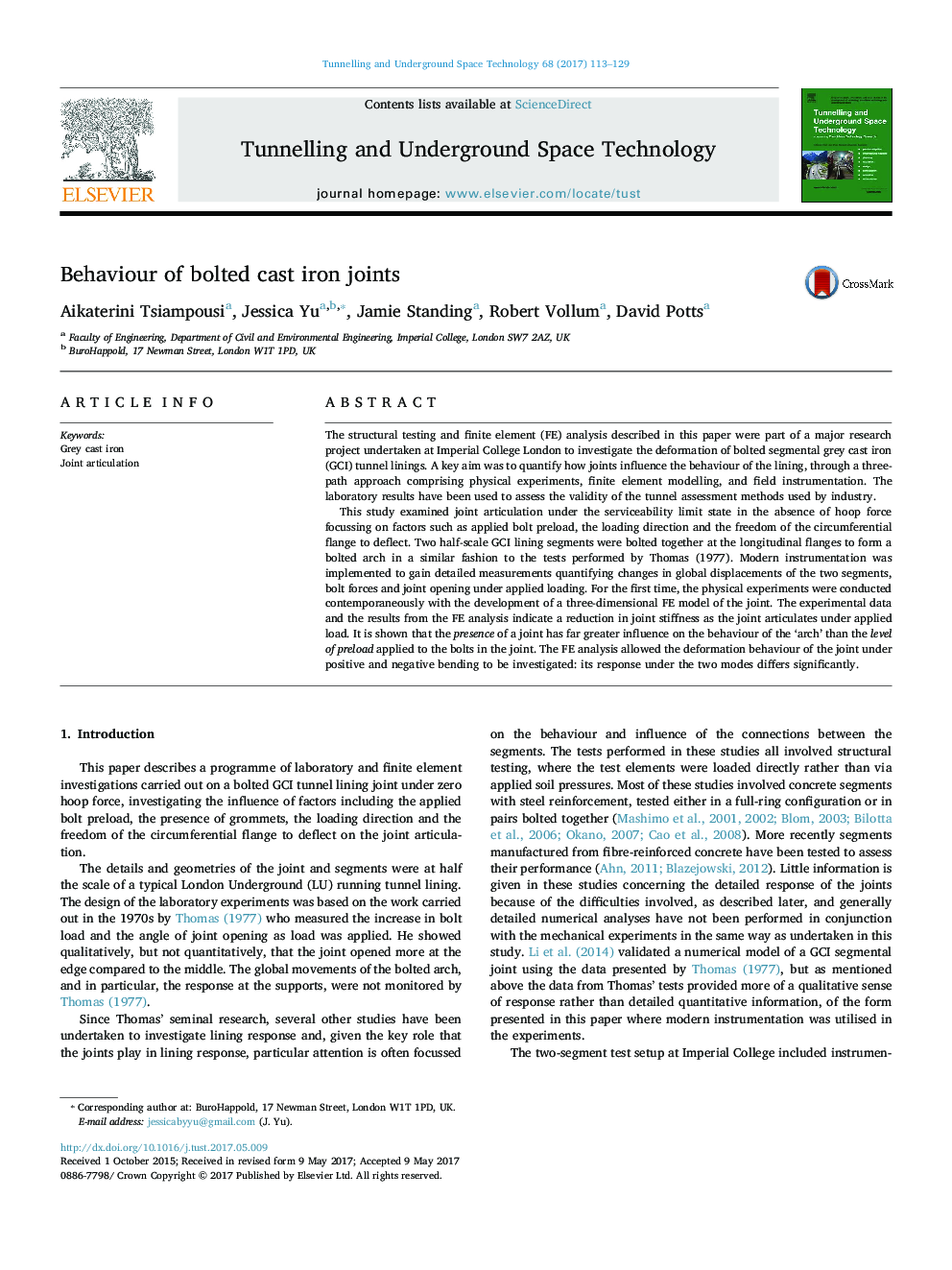| Article ID | Journal | Published Year | Pages | File Type |
|---|---|---|---|---|
| 4929354 | Tunnelling and Underground Space Technology | 2017 | 17 Pages |
Abstract
This study examined joint articulation under the serviceability limit state in the absence of hoop force focussing on factors such as applied bolt preload, the loading direction and the freedom of the circumferential flange to deflect. Two half-scale GCI lining segments were bolted together at the longitudinal flanges to form a bolted arch in a similar fashion to the tests performed by Thomas (1977). Modern instrumentation was implemented to gain detailed measurements quantifying changes in global displacements of the two segments, bolt forces and joint opening under applied loading. For the first time, the physical experiments were conducted contemporaneously with the development of a three-dimensional FE model of the joint. The experimental data and the results from the FE analysis indicate a reduction in joint stiffness as the joint articulates under applied load. It is shown that the presence of a joint has far greater influence on the behaviour of the 'arch' than the level of preload applied to the bolts in the joint. The FE analysis allowed the deformation behaviour of the joint under positive and negative bending to be investigated: its response under the two modes differs significantly.
Keywords
Related Topics
Physical Sciences and Engineering
Earth and Planetary Sciences
Geotechnical Engineering and Engineering Geology
Authors
Aikaterini Tsiampousi, Jessica Yu, Jamie Standing, Robert Vollum, David Potts,
